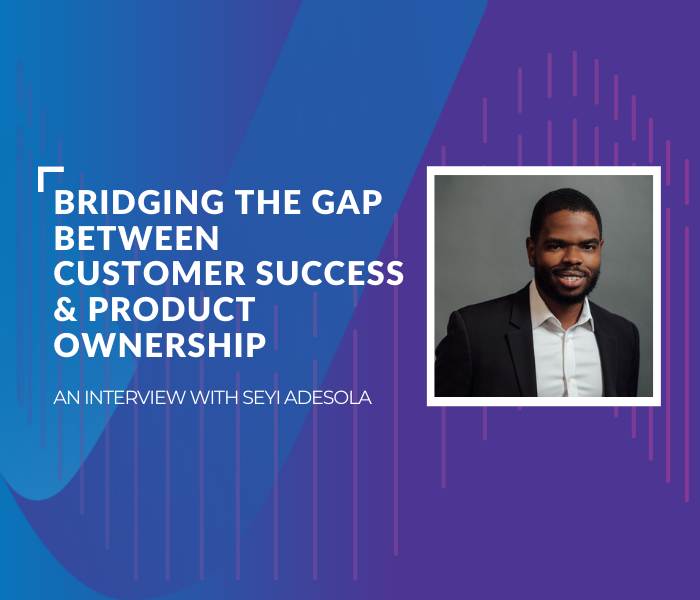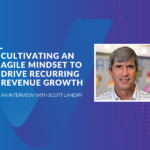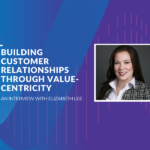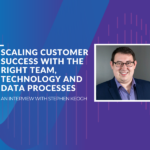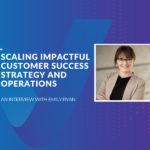Connect Your Customer Ecosystem With A Product Owner
Product Owner is one of the most widely misunderstood roles, both within the context of Customer Success and more broadly across software organizations. Part of this confusion stems from the fact that the Product Owner is not a universally defined role; each organization has a different, and sometimes conflicting, idea of what their Product Owners should be doing. When deployed correctly, Product Ownership is an invaluable role that provides tactical support to your development team, translates customer value, goals and pain points into product improvements, and leads effective and impactful development sprints.
To find out how Product Owners are reshaping the customer ecosystem and product experience in leading software organizations, I spoke with Seyi Adesola, Product Owner at Valuize. Seyi has extensive experience working with leading software development teams to deliver value to customers by spearheading full cycle developments of various products within the Agile framework. In this in-depth interview, Seyi shares his expertise on how to align the customer ecosystem and champion an Agile transformation to create a phenomenal product experience that truly engages the customer throughout their journey.
Q: What was your first job? How did you get started as a Product Owner?
“My very first job, circa 2009, was as a sign spinner for a company called Great Glasses. I would stand at a busy intersection for hours and hold up a sign telling people to come by and score the 3-for-1 Great Glasses deal!
Thankfully, there’s no correlation between my first job and my current role in Product Ownership! After I graduated from university, I landed in Business Analysis. At the time, the trend in Product Development was veering towards Agile development, so I underwent a lot of training to get up to speed on Agile development frameworks and how to implement them. From there, I navigated into Product Ownership and have been working in the industry for the past six years.”
Q: What is the role of a Product Owner in the context of Customer Success Operations? Why is it an important component of the ecosystem? What outcomes does it enable?
“Product Owners are an important part of the ecosystem because they bridge the gap between your business and technical units. Usually, business stakeholders and technical teams speak in their own unique terminologies and languages, which often creates communication challenges and barriers. Product Owners are bilingual; they act as a liaison to bridge the gap between these disparate functions to translate business needs, strategy and goals into technical requirements and solutions.
Product Ownership also enables vital outcomes for Customer Success Operations. By reducing ambiguity across your organization, Product Owners enable a seamless translation of strategic objectives into technical specifications and improvements in your product. They also create structure and procedures around how your cross-functional teams interact with one another and how they work together to deliver software developments on an incremental basis. Product Owners are like shepherds; they guide your teams and product in the direction your customers and company needs to go.”
Q: What excites you about working in Product Ownership? How do you think the domain will continue to evolve from here?
“The most exciting aspect of working in Product Ownership is the breadth and depth of the role; it’s one of the few roles that works holistically across the organization. Business units usually think about the end user from a strategic point of view while Technology thinks about the end user from a technical point of view, but Product Ownership act as the voice of the customer and the linchpin that connects the entire organization around the customer.
While Product Ownership has been around for some years, organizations are just scratching the surface of its true value potential. As we see more software companies starting to notice the gaps between their technical and business functions, I think we’re going to see a surge in Product Owners’ roles and responsibilities across the industry.”
Q: In your experience working with a multitude of companies across various domains, what is the intersection of Customer Success, Product and Sales? How can organizations successfully bring these cross-functional teams together and ensure alignment and collaboration?
“Alignment between Customer Success, Product and Sales is critical to driving quality lead generation, successful customer adoption and strong internal partnership . While many organizations view these functions as separate and distinct, they are all interconnected and affect each others’ day-to-day activities. For example, the feedback that Customer Success teams receive from customers feeds directly into product developments and improvements that Product makes, which then helps the Sales team generate leads and the CS team drive greater customer adoption and retention.
Since these teams are all interconnected, it’s vital that they are aligned and enabled to collaborate easily with one another. The first step to achieving this is to break down any siloes between these teams and communicate the circular, interdependent nature of their relationship from the top-down. Organizations can increase collaboration by showcasing the value the various teams provide; for example, asking Sales Engineers or Solutions Architects, traditionally Product roles, to join Sales calls to expedite and simplify the Sales cycle.”
Q: What are the merits of a product-led strategy and a customer-led strategy? How do the two converge?
“While many organizations approach them as two distinct strategic initiatives, I think that product-led and customer-led strategies should be synchronous. Customer-led strategy should serve as the building blocks of your organizational strategy. Without it, you’re building a product with no goal, vision or direction in mind, resulting in irrelevant functions and features, missed opportunities and a poor product experience for your customers. With a robust customer strategy, you have a clear understanding of what the customer needs and wants to see implemented in your product. Product-led strategy is the tactical phase; this is when you translate customer needs and goals into product developments that provide value to customers and increase their engagement and adoption of your product.”
Q: How can Customer Success leaders successfully and effectively engage their customers through a product-led engagement model?
“Building a product that enables users proactively versus retroactively is an effective way to engage customers via a product-led engagement model. By ensuring that your product is intuitive and user-friendly (you can verify this using Task Success Rate, Customer Effort Score and Task Completion Time metrics), you’re guaranteeing that your end users will have a great experience without relying on support teams. This approach shifts the engagement from conversations around support or rudimentary issues to more strategic conversations about how to drive the customer’s desired outcomes with the product.”
Q: What are some of the most common challenges that software organizations face when it comes to implementing and operationalizing their Product frameworks and strategy? What recommendations do you have for Customer Success Operations leaders looking to overcome these challenges?
“One of the major challenges that software organizations face is a lack of internal consensus around their organizational strategy. The first thing that Customer Success leaders must do is outline and communicate a clear strategy that can adapt and evolve . Your strategy should establish checkpoints (6 months, 12 months, and so forth) at which you revisit your strategy and iterate it to ensure it continues to provide value to your team members and to your customers.
In our experience, we find that organizations don’t have a solid grasp on their data ownership. They lack a structured data governance model and clarity in regards to their customer data. Data is a key component of building a robust strategy, creating processes that facilitate value delivery and developing an engaging product. Leaders must understand which data points actually provide meaningful information and have unfettered access to a single source of truth for all of their customer data.
As inter-departmental collaboration increases and software organizations become more integrated, selecting the right technology is becoming increasingly more important. Currently, the norm is that each department uses a specific and distinct platform and Customer Success Managers (CSMs) have to go into multiple applications just to perform one activity for their customer accounts. You need to find a technology solution that makes your CSMs’ jobs easier and automates processes through a single Customer Success-dedicated technology platform like Gainsight, Totango or MetaCX. With the right technology in place, you can successfully execute your strategy, implement a clear set of processes and make the most of your customer data.”
Q: How can software organizations create a great product experience that truly engages their customers?
“I think the best product experience is dependent on two things. First, a product experience should deliver Minimum Viable Product (MVP), which is the minimum amount of functionality that will add value to your customers. Second, the product experience should incorporate customer feedback into the product experience. Making your customers feel like they’re part of the ecosystem and the product’s evolution is critical; you’re only profitable for as long as your customers derive value from your product. You need to make it all about the customer. Some of the most effective ways to keep customers involved and informed throughout the customer journey include inviting them to thought leadership webinars, training them on new features and functionalities, or inviting them to a community where they can share, recommend and vote on product updates and new feature developments.”
Q: What are the most important considerations that companies should take into account when adopting Agile methodologies? Where should companies begin and how can organizations ensure a successful Agile transformation?
“First and foremost, you need to start with the why; why are you transitioning to an Agile framework and what are you trying to achieve? A lot of organizations want to jump straight into Agile because it’s new and different, but you need to start by outlining a clear business case for an Agile transformation. With this established, the next step is to clearly communicate this initiative from the top-down so that everyone in your organization understands why this change is happening and what’s expected of them.
During this process, explore the following questions:
- What does Agile enable us to do as an organization? Will Agile be used to evolve a product, stay nimble or evolve our strategy?
- How are we going to use Agile? What do our teams need to do differently or change to adopt this new approach?
Once you answer these questions and map out your Agile transformation, you need to provide all team members with adequate training to ensure their success and appoint change agents that facilitate an organization-wide Agile adoption.
After you figure out the why and what of your transformation, it’s time to determine which type of Agile framework is the best fit for your organization’s needs. There are so many different frameworks, from Scrum to Kanban, and they’re flexible enough that you can pick and choose specific aspects of each to suit your needs. For example, some organizations have a rigid strategy process but a flexible technology implementation procedure for which Agile would be perfect.
The most important thing that your organization should keep in mind is that a transformation of this scale doesn’t happen overnight – it takes time and patience. Start by implementing Agile in bit-sized pieces, get some quick wins and then roll out your chosen Agile framework to bigger and bigger projects and processes.”
Bonus Q: What’s your favourite way to spend a Sunday?
“My ideal Sunday is a laid-back and lazy day; I’d start by sleeping in, relaxing with my daughter and my wife, watching a show and some sports, grabbing a bite to eat and just disconnecting from technology as best as I can. It’s a little anticlimactic, but that’s my ideal Sunday.”
Deliver A Phenomenal Product Experience
To maximize customer adoption and retention through an elevated and engaging product experience, here are Seyi’s top 3 recommendations:
- Aligns your entire organization around a customer-led strategy. Outline your customers’ goals and pain points and build a strategy that helps all of your customer-facing teams address and deliver the right outcomes through your product. Use this strategy as your North Star and iterate as you go to keep up with your customers’ changing demands and needs.
- Data is essential to driving improvements in your strategy, processes and product. Ensure you have a solid data governance model in place and a single source of truth that all of your customer-facing teams can easily access for the most up-to-date and complete customer information.
- Put your customer at the centre of everything you do. Your customers’ needs, goals and pain points should be driving your product-led strategy and developments, so make sure you have open lines of communication that regularly collects their feedback, involves them in the product development process and keeps them informed about changes and improvements.
If you’re ready to optimize your customers’ value realization and accelerate your company’s growth through an Agile framework, contact Valuize for expert guidance from Seyi and the Valuize team.

